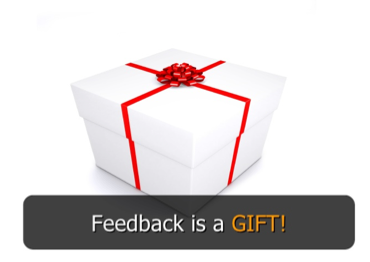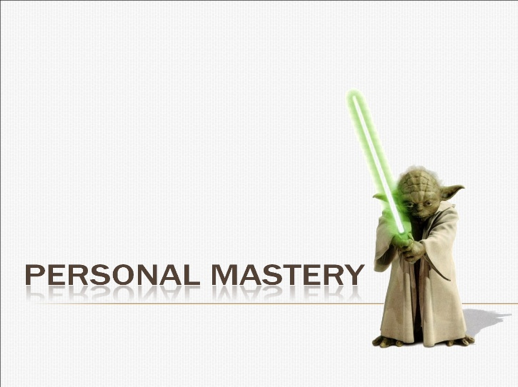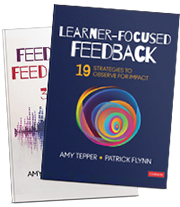
Who doesn’t love presents? As we get older, we find we are giving fewer material items and frequently gifting “experiences” to each other and friends like concert tickets, homemade vouchers, or spa visits. Of course, we all love the immediate satisfaction of putting on a new sweater or playing with a new gadget, but we know long after the gift is opened, an experience has long-lasting staying power.
So why can’t we apply this same thinking to feedback we give? We are busy trying to think of cute and useful gifts for our staff members, but let’s not forget that the best gifts are ones teachers and leaders will enjoy all year–ones that are built on strengths that lead to actionable, bite-sized, and attainable next steps that make us feel successful and improve outcomes for our learners.
When you provide this type of feedback, you are giving the gift of a “Mastery Experience,” the most influential of Bandura’s sources of self-efficacy. You are setting the receiver on a path for success, even if the first try is an attempt that still needs some refining.
In the Zone

For this to occur, next steps must allow a receiver to grow within their zone of proximal development. This is challenging in our classrooms and equally as challenging with adult learners. It is too broad/hard to simply suggest to a teacher, “You need to differentiate.” or “You need to engage more students.” Though these both may be true, the teacher is left with no bite-sized next step.
Last year, a 6th grade math teacher who wanted to work on assessment methods received feedback to “use a Do Now” at the outset of her lessons. She wanted to follow this suggestion, but did not know how or why. This year she has a new supervisor who observed the following:
Nearly half (8/20) of the students incorrectly completed the Do Now and 5 are not finished when the teacher put the answers on the board after 6 minutes of work time. The teacher checks to see that everyone copied down the correct answers but does not address the misunderstandings going on with the day’s lesson.
Tepper and Flynn, 2019
The observer asked herself:
Why are so many struggling with review material? What did yesterday’s lesson look like? Where are yesterday’s assessments? Did the teacher realize they were not all finished? Why didn’t anyone tell her they were not finished? (Feedback to Feed Forward, 2019)
The observer considered the following strategies to support the teacher:
FF Strategy 28: Determine an Accurate Root Cause
Think: What is at the heart of the outcomes observed?
There are several possible causes:
- Students didn’t have the knowledge to complete the task which could be related to the design of the Do Now or the scaffolding/instruction leading up to this point
- Students don’t feel comfortable speaking up to say they aren’t done and she did not monitor while they were working
- The teacher is trying to maximize time but is moving on without using the data
FF Strategy 29: Use key levers [from your instructional framework] for next steps
Think: What are the descriptions in the next levels of expectations?
The instructional framework for “ongoing monitoring” says:
| “Monitors student learning with focus on eliciting evidence of learning at critical points in the lesson in order to assess individual and group progress toward achievement of the intended instructional outcomes.” (CCT, 2017). This teacher recognizes the beginning of a lesson to be a critical point, but needs to think about how to use the task to assess student understanding to make decisions, not just execute a routine or activate prior learning. |
FF Strategy 30: Use logic
Think: What logically should come next? What makes sense in a progression and pacing? What can the teacher handle in the next week or so?
The observer is thinking it is not logical to go on and put answers on the board while students are still working and some are struggling. Perhaps the most logical next step for the teacher is to walk around while students are completing the Do Now as making an adjustment midstream may not be attainable at the moment. Circulating would help the teacher see who is finished/on track or not. The teacher can work up to making adjustments and proactively planning with the previous day’s learning.
FF Strategy 31: Build on a teacher’s needs and strengths
Think: What previous knowledge or skill has the teacher demonstrated that will help you build next steps together?
Clearly, this teacher is open to feedback as evidenced by the willingness to employ Do Nows since receiving the initial suggestion. During other visits, the observer has noticed that the teacher recognizes errors and conceptual misunderstanding when monitoring independent work, so this is a good place from which to build. Perhaps, the teacher is only thinking a Do Now activates learning or is a warmup and doesn’t see how it can be of great value as a checkpoint.
At the end of the day, it is about knowing your teachers and weaving these strategies with teacher’s goals.
It’s NOT the Thought that Counts
Just suggesting to a teacher to “Use Do Now” is well-intentioned. But until this teacher better understands the purpose, how to design a Do Now, and use on-the-spot to make instructional decisions, the tool cannot be maximized.
When a teacher receives feedback that is not attainable or useful, it is like when your aunt sends you pajamas that you just don’t like or that just don’t fit. You smile and say thank you, and you do the obligatory fashion show out of compliance, but you are not sure when you would wear them again (if ever).
It is through the use of purposeful strategies after visiting a classroom that you are giving the gift to your teachers that keeps on giving–impactful feedback that feeds forward, builds reflection and results in growth and improved student outcomes.
So this season, give the gift of feedback that a teacher can use and not just throw into the closet or up on the shelf!
Let’s stay connected – Sign up for our mailing list
Give the gift of our resources for anyone who provides feedback:
Order Feedback to Feed Forward: 31 Strategies to Lead Learning Pre-order Learner-Focused Feedback: 19 Strategies to Observe for Impact




Leave a Reply